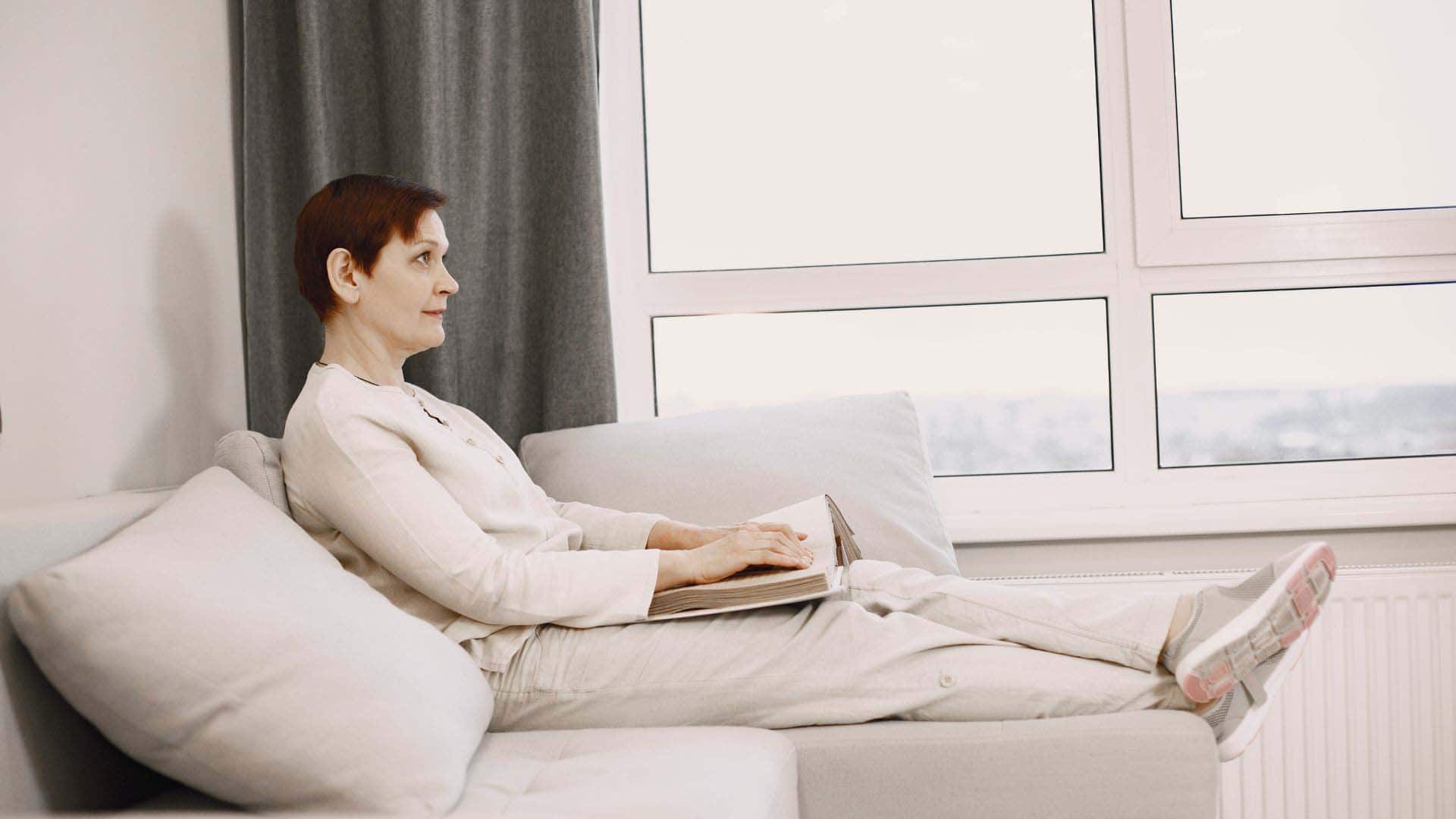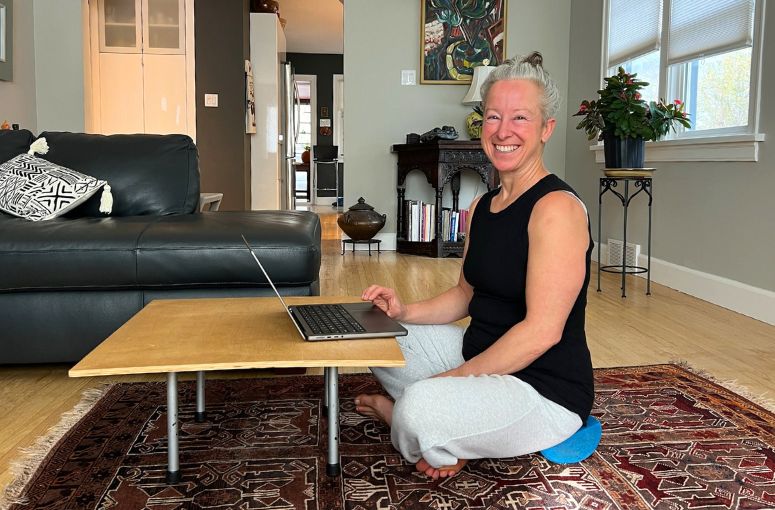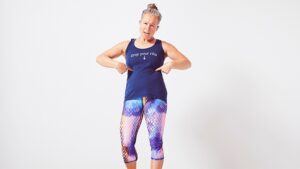UPDATED: April 16, 2025
Floor sitting (sometimes referred to as “ground living”) is an underrated practice that has numerous benefits for your overall health and well-being. While it may seem uncomfortable or unnatural at first, sitting on the floor can improve your mobility, increase your metabolism, build your muscle mass, help fix problems you didn’t even know you had and make you healthier for the long run – all with zero extra time required!
6 Reasons Why Floor Sitting Is Your Secret Wellness Weapon
#1 Improved Mobility
Sitting on the floor requires more flexibility and mobility than sitting in a chair or on a couch.
By sitting at ground level, you’re giving your ankles, knees and hips frequent opportunities to move through their full ranges of motion as you get up and down.
You can also use a wide variety of sitting positions while on the ground (waaayyyyyyy more than in a chair). This lets you improve your mobility without taking any extra time in your busy day!

#2 Increased Movement
The average American adult spends 6.5 hours every single day sitting (that’s 2,373 hours per year!). While it may seem harmless and feel great at times, sitting for long periods is harmful for your health. In fact, a 2018 study found that people who spend a prolonged time sitting have a higher risk of mortality from cardiovascular diseases, cancer and “all other causes.”
When you sit on the floor, you’re naturally more inclined to move around and shift positions – there’s nothing holding you up! Each time you change positions, you’re waking up your muscles, getting a little extra blood flow and increasing the amount of movement in your daily life.
In fact, some studies have suggested that the excellent cardiovascular health enjoyed by hunter gatherer populations may be due in part to resting by kneeling and squatting instead of by sitting in chairs.
Weekly movement inspiration you can’t wait to read!
#3 Stronger Muscles & Improved Balance For Better All-Around Health
You may be familiar with the well-known 2014 study where researchers gave participants the Sit-and-Rise Test to see if they could get up and down from the floor and if they could do it without any support. The researchers checked in with the participants six years later. They found that an inability to get up and down off the floor without assistance is associated with greater risk of death.
Getting up and down from the floor requires more effort and engagement from your leg and core muscles than getting up & down from a chair or a couch. Frequently lifting a full body weight load from ground level strengthens your core and leg muscles. Stronger legs and core mean you’re reducing the risk of a debilitating fall and mean it’s more likely that you’re in better all-around health.
(BTW if you struggle with the Sit & Rise test, check out this quick video with some points to make it more accessible so you can get better at it safely!)
#4 Improved Pelvic Floor Health
Floor sitting offers lots of great hip position options – way more than sitting in a chair! The muscles that attach to our hips function as an essential part of our pelvic floor. This means that floor sitting can be amazing for pelvic floor health.
Plus, sitting in a chair (or couch, or car seat) encourages a posterior pelvic tilt (aka where the low back is rounded into a letter ‘C’ shape). This position tightens our hamstrings, decreases core muscle function and puts our pelvic floor muscles into a continuously shortened position.

Although it’s certainly possible to sit on the floor in a posterior tilt, you can use a cushion or yoga bolster to prop yourself up into a more neutral position.
This is hugely beneficial for your core and pelvic floor – and you won’t be tempted to get lazy & lean back into the backrest!
Plus sitting without back support requires the use of your core muscles. Something’s gotta stop you from falling over! Like your hip muscles, your core functions as an integral part of your pelvic floor system. So your pelvic floor gets a double dose of goodness!
(If you’re interested in learning more essential ways to help your pelvic floor, check out my newest program Pelvic Floor+ right here!)
#5 Increased Metabolism & Weight Management
Sitting on the floor can also help increase your metabolism (the rate at which your body burns calories). Sitting with less support AND getting up & down both require more effort from your muscles than sitting in a chair. This increases your heart rate and energy expenditure.
When you floor sit you also move around and fidget more. New evidence suggests that fidgeting might be a programmed response that helps us unconsciously maintain our weight. In fact, a clinical study found that fidgeting while sitting can actually increase the amount of calories you burn by 29%!
#6 Frequent Movement Decreases Inflammation
There have been numerous studies looking at the effects that different patterns of sitting (extended versus interrupted) have on the body, specifically, how they affect chronic, low-grade inflammation.
In his book, Exercised: Why Something We Never Evolved to Do Is Healthy and Rewarding, Daniel Lieberman describes the effects that long periods of sitting can have on people who are fit and work out a lot.
A 10 year study of 900 men concluded that, while fitter, more active men were less likely to die from things like heart disease and type 2 diabetes, those who sat most from this “fit group” had a 65% higher risk of inflammatory-related diseases than those who sat the least.
In short – the more time you spend sitting, the higher your risk of chronic illnesses linked to inflammation (including some forms of cancer).
The good news is – floor sitting can help lower inflammation. Another multiyear study of almost 5,000 people concluded that individuals who broke up their sitting with frequent short breaks had up to 25% less inflammation than those who didn’t (even though they both sat down the same number of hours). Floor sitting it naturally offers lots of different ways to break up long periods of sitting – which makes it a simple but effective way to fight inflammation.
Weekly movement inspiration you can’t wait to read!
If Floor Sitting Is So Great, Why Isn’t Everyone Doing It?
While ground living may seem unusual to those of us who regularly sit in chairs, it’s actually quite common in many cultures around the world. And not coincidentally, older people in those cultures retain lots of mobility!

Despite the numerous benefits for your health and well-being, it can be difficult to start floor sitting if you’re new to it.
I asked my Facebook and Instagram communities what barriers prevent them from floor sitting and these were the three most popular responses:
1️⃣ Too hard to get up & down from the ground
2️⃣ Too uncomfortable
3️⃣ Lacking the necessary mobility
(Another very popular response was “pets & kids” but I’m afraid I can’t help with that one!)
How To Get Started Floor Sitting
Step 1: Build The Strength You Need To Get Up And Down From The Floor
One of the main barriers to floor sitting is a lack of strength.
The good news is we can absolutely build the strength we need to safely get up and down from the floor.
In Part 1 of this video series I go over some super accessible ways you can slowly build up the strength you need to start floor sitting.
(P.S. You’ll find modifications for all of the exercises in this video so you can meet your body wherever it’s at and customize these exercises to your unique needs).
Floor sitting is a wonderful way to reduce discomfort from prolonged periods of sitting in chairs. However, it can also create it’s own discomfort if you’re not used to it or if you don’t have proper support.
Learning to bolster up is your answer! Adding a bit of support will increase your comfort & help you build mobility faster. If we start floor sitting without enough mobility already in place, our bodies have no choice but to export our ‘chair shape’ to the floor. We often end up with a very rounded low back and a tucked pelvis – which means the outcome isn’t very different than if we were sitting in a chair. Smart bolstering and props will help you find a position that allows you to improve your hip mobility instead of compensating with your low back!
So, in this second video you’ll find lots of ways to use props and various items you have lying around your house to make floor sitting more comfortable and less painful.
Before watching the video, you’ll want to have some squishy stuff around. There’s no magic here – try any or all of the following:
✅ A yoga bolster and/or couch cushions
✅ Blankets and/or towels
✅ Yoga blocks (or thick books)
✅ A half dome or half foam roller
✅ Other squishy stuff
And remember, you can (and should) experiment with many different positions. We may have been told not to fidget and move when we were younger but it’s actually really good for us to move often and to sit in a wide variety of different ways. Try sitting cross-legged, with your legs in front of you, in a wide-legged V position or any other position that works for you. The possibilities are endless!
By switching up positions and getting creative you can reduce discomfort and increase blood flow to different parts of your body – a win win!
Step 3: How To Build More Mobility
Now that you’re strong enough to get down to the floor and you have all the props you need to get comfortable, we’re going to focus on the last piece of the floor sitting puzzle: building the necessary mobility to make floor sitting more doable.
Individual mobility challenges can vary but the three areas that tend to create barriers when it comes to floor sitting are the hips, knees and toes.
This last video will give you 4 great mobility tools to help you increase the range of motion of your hips, knees and toes. And since these three areas are also involved in much of our other movement activities and practices, you’ll find this supports many of your other movements as well!!
How To Turn Your Home Into A Ground Living Haven
Now that you’re spending more time sitting on the floor, you may be wondering – “What about all my furniture?! Am I just supposed to live in an ugly, empty space?”
Definitely not!! There are many different ways you can explore transforming your home into a more inviting ground living space. Think plush carpets, beautiful cushions and low tables for working and dining.
If you’re not ready to fully commit to floor sitting and scrap your existing furnishings, here are some ways you can repurpose what you already have to make your home more movement-friendly.
And if you’re all in on going furniture free, this post help you get it done in just 8 easy steps!
Finally, if you’re looking for some design inspiration, check out these beautiful real-life ground living spaces.
Regardless of wherever you’re at in your floor sitting journey, I hope you feel confident and ready to reap all the benefits that come with this wonderful practice.
And if you’re looking for more ideas and exercises to support your floor-sitting (and your entire wellness and movement journey) make sure to get on the waitlist for my Take10 membership program. Take10 covers all the movement you need so you can live the active life you dream about for decades to come!







